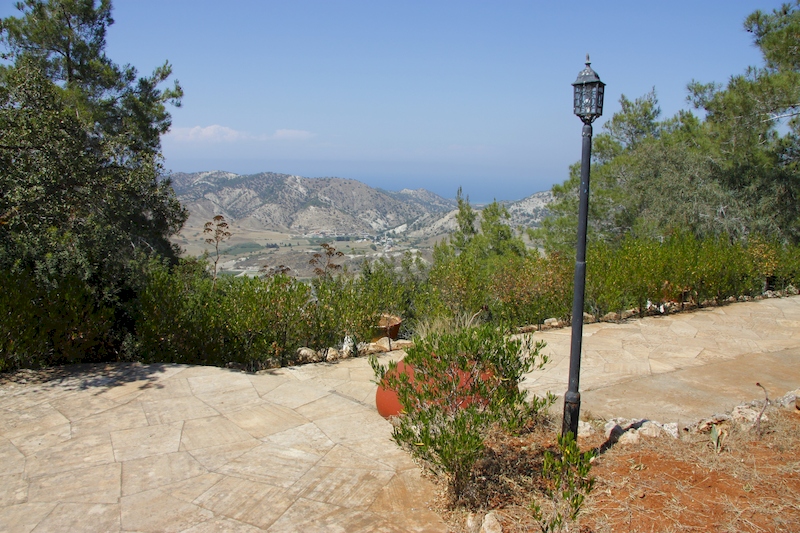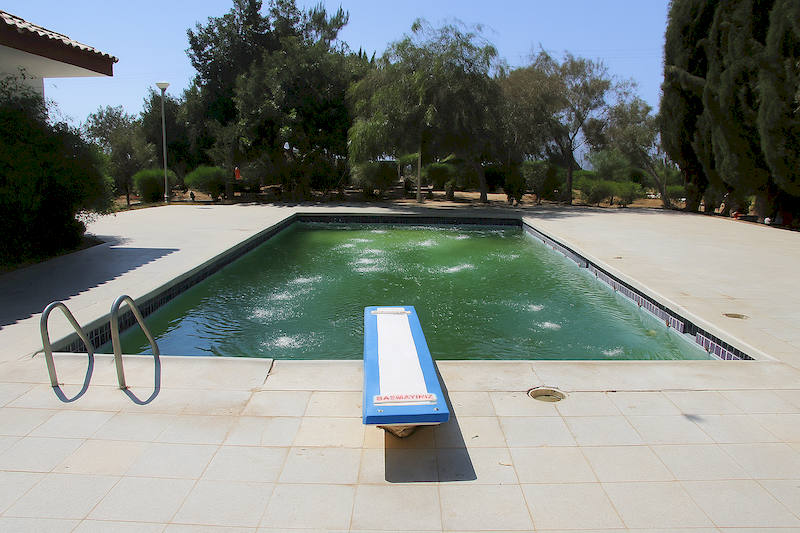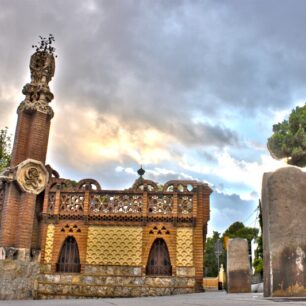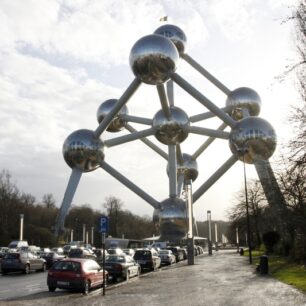Tucked in the hills between Çamlıbel (Myrtou) and Güzelyurt in Northern Cyprus lies one of the island’s most mysterious and eccentric landmarks: The Blue House, or Mavi Köşk.
This striking 1957 villa wasn’t just a summer retreat—it was the private hideaway of Paulo “Byron” Pavlides, a Greek Cypriot lawyer, businessman, and alleged arms smuggler with deep political connections and an even deeper love for luxury.
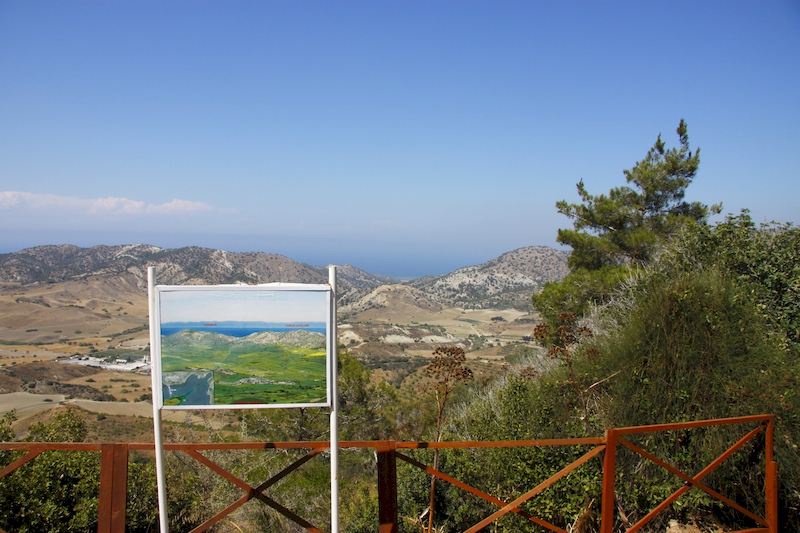
Today, the Blue House is open to visitors, but what you see is more than just historical architecture. It’s a surreal mix of secrecy, mafia legends, and millionaire eccentricity. Step inside and uncover the story of this infamous mansion.
Paulo Pavlides: The Enigmatic Owner
Paulo Pavlides was more than just a high-powered lawyer—he was the legal advisor to Archbishop Makarios, and according to many sources, he was deeply involved in arms trading throughout the Middle East.
His influence in Cyprus stretched from business to politics, but it was the rumors surrounding his hidden dealings that built his myth.
By 1974, as the Turkish Peace Operation began, Pavlides fled the mansion—allegedly through a secret tunnel leading from his bedroom to the sea. He settled in Italy, where he reportedly died in 1986. The official cause remains unclear, but rumors suggest he was executed by Mafia connections that once empowered him.
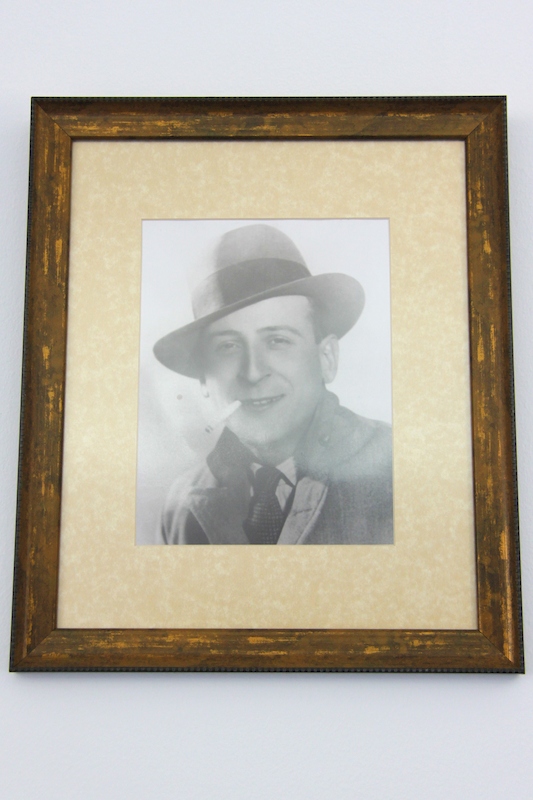
Inside the Mansion: A Blend of Luxury, Oddity, and Paranoia
The Blue House was ahead of its time. Built in 1957, it was equipped with technology and design features that seemed decades too modern for the region.
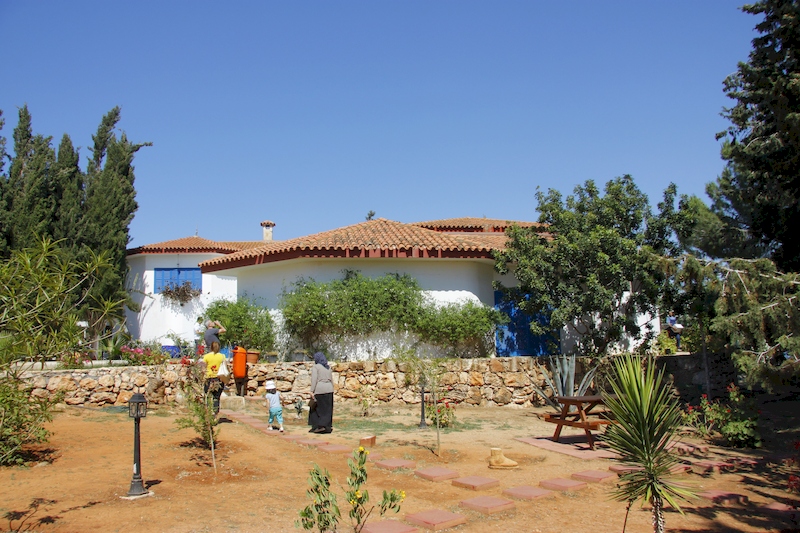
Modern Conveniences of a Paranoid Mind
The house includes central air conditioning, central heating, and concealed ventilation shafts to keep the building cool and discreet. Thick velvet curtains block out heat and sound.
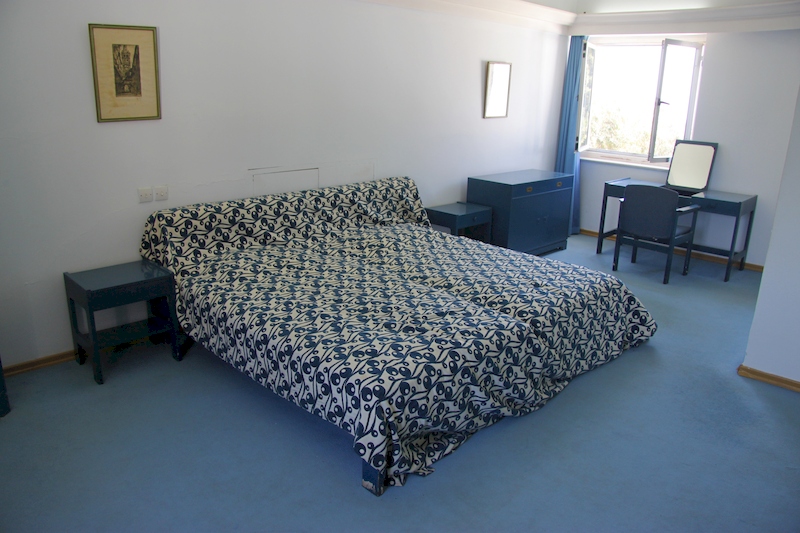
The Bunker and Escape Tunnels
One of the most fascinating features of the Blue House is its concrete bunker, located beneath the mansion and open to visitors today. This bunker was built as a secure refuge during times of conflict or crisis, reflecting Pavlides’s deep-seated paranoia and his desire for safety.
Legend has it that a network of secret tunnels extends from the house, some supposedly leading all the way to a hidden cove along the nearby cliffs. Here, Pavlides kept a private yacht ready to whisk him away in case of emergency—his personal escape plan if danger came knocking.
Visitors can explore the bunker and get a sense of the seriousness with which Pavlides prepared for the worst, making this mansion more than just a lavish home—it was also a fortress.
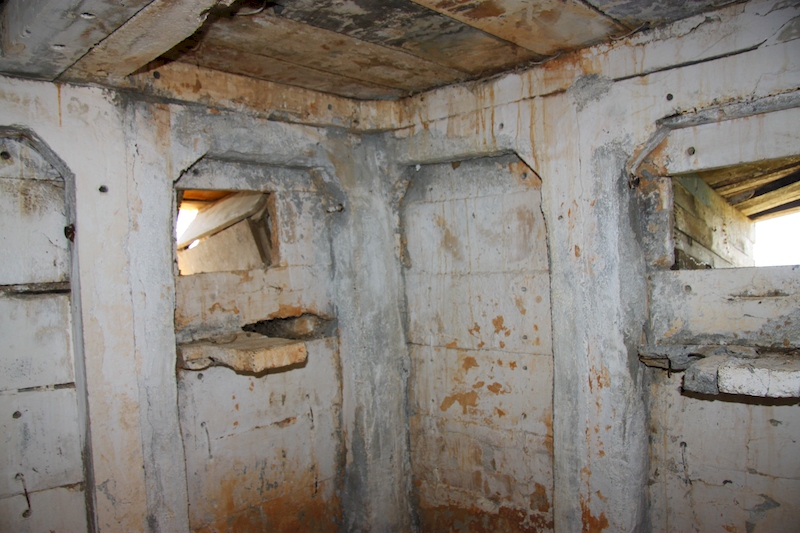
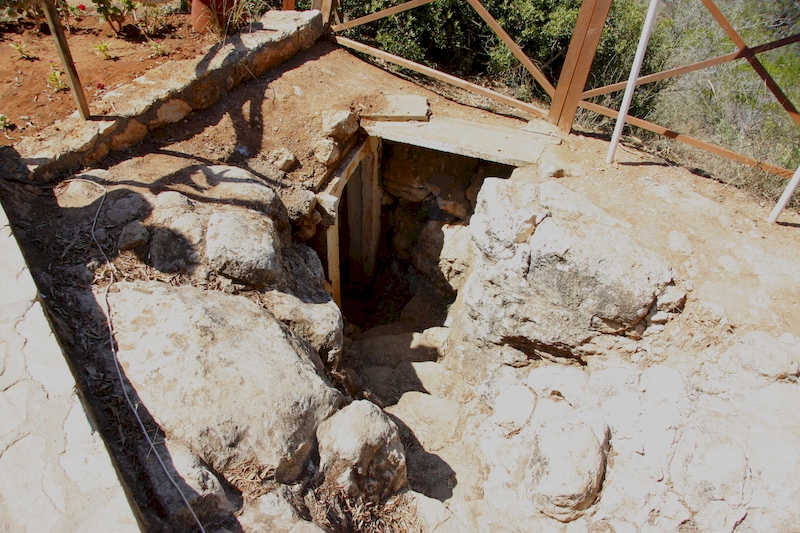
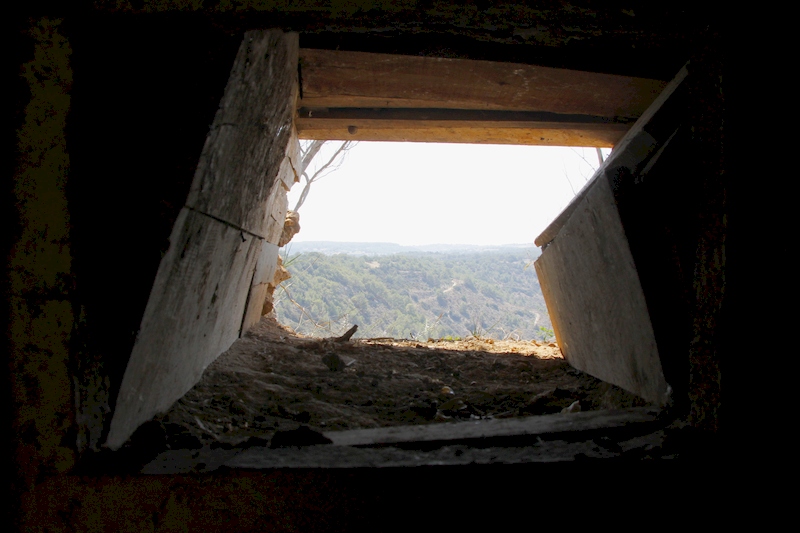
The Lion Cube Fountain
In the garden, there’s a feature that captures everyone’s attention: a sculpted stone fountain known as the Lion Cube. This wasn’t a regular water fountain—Pavlides had it flow with wine. Yes, real wine. This luxurious oddity served as a symbol of the decadent lifestyle he cultivated. Whether for private parties or simply to impress his guests, the Lion Cube was the centerpiece of the garden’s unique charm.
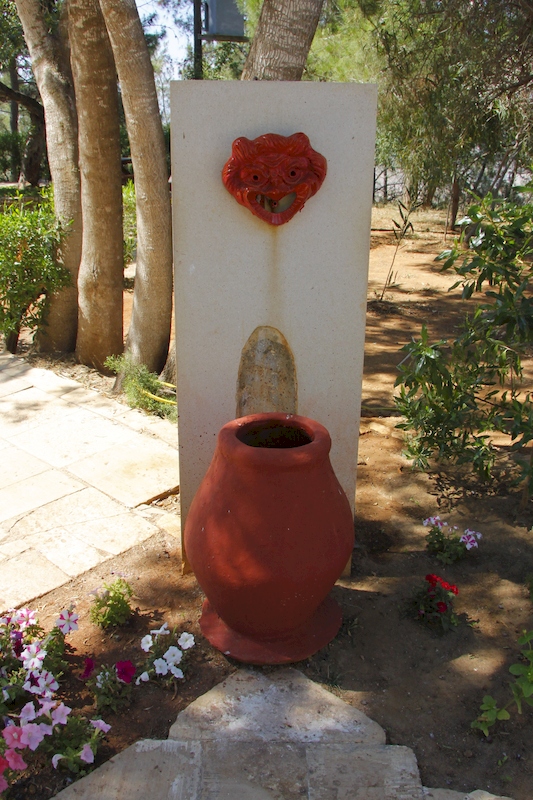
Milk Baths and Hollywood Glam
Inside, one of the smaller indoor pools was reportedly used for milk baths. Local guides claim that legendary actress Sophia Loren once visited and bathed there. Whether that’s fact or fiction, the indoor space is certainly styled for cinema—high mirrors, detailed tiling, and a theatrical aura that makes you feel like you’ve stepped onto a mid-century movie set.
The Earthquake Alarm Statue
One of the most fascinating features is the statue placed beside the outdoor swimming pool. Pavlides, known for his fear of earthquakes, had the statue positioned so that if the earth trembled, it would fall into the pool and alert him. It’s a strange but clever design choice—one that perfectly captures the intersection of anxiety and wealth that defined the man behind the mansion.
The Acoustic Speech Training Spot in the Garden
In the garden of the Blue House, there is a unique architectural feature designed to help Pavlides train his speeches. This acoustic spot—an outdoor area carefully crafted with stone and layout to enhance sound projection—allowed him to practice oratory with perfect clarity and resonance. It’s said that Pavlides, always conscious of his public image and political ambitions, used this space regularly to refine his speeches, taking advantage of the natural acoustics the garden provided.
The Fake Library Room
One of the mansion’s more curious features is its fake library room—designed purely to impress visitors. Instead of real books, the shelves were filled with only the hinged spines of books, giving the illusion of a full, grand library. This clever facade showcased Pavlides’s flair for showmanship and his desire to create an atmosphere of cultured sophistication, even if it was all just for appearances.
Quirky Interior Details
Other details inside the house include:
- A minibar upholstered in real iguana skin that changes color with temperature.
- A statue of the Virgin Mary with optical illusions: her eyes, hands, and feet appear to follow you around the room.
- A soundproofed entertainment room where Pavlides reportedly hosted late-night meetings—some say with arms dealers, others with celebrities.
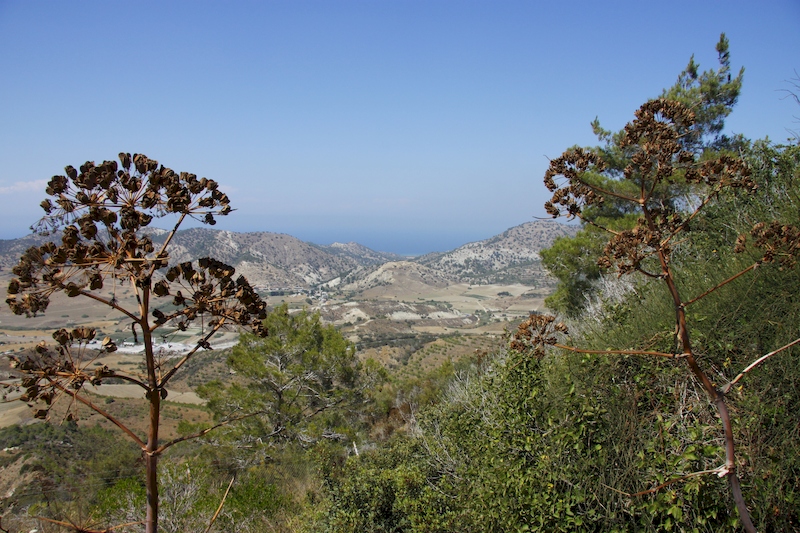
Rumors, Legends, and Gossip
Like any house surrounded by mystery, the Blue House is drenched in stories. Some say Pavlides had the architect and builders killed to keep the layout secret. Others claim he hosted mafia leaders and political outlaws here, sealing deals behind closed doors. There’s even a persistent tale that Marilyn Monroe stayed the night during a brief visit to the island.
Whether any of these stories are true doesn’t matter much anymore. The mystique lives on in every room, every stairway, and every carefully curated detail of the house.
How to Visit the Blue House
The mansion is located within a military-controlled zone near Çamlıbel. Visitors must show a valid ID or passport at the checkpoint to gain access. Guided tours are available in several languages, and while photography inside is prohibited, the images you’ll carry in your memory will be just as vivid.
The house is open most days from late morning through the afternoon, but it’s best to check local listings or tour schedules in advance.
